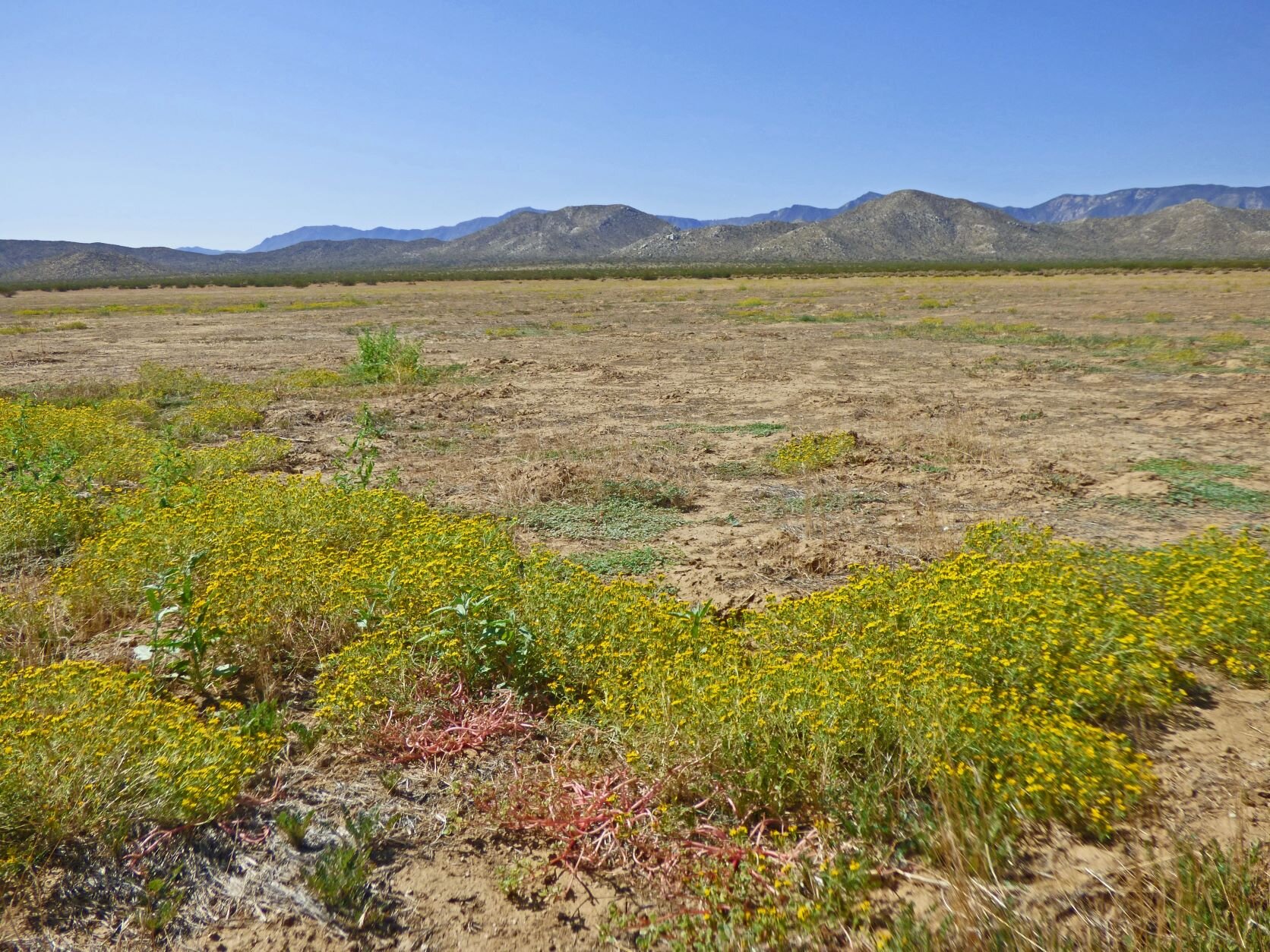By Tom Oberbauer, President CNPS-San Diego
During the Pleistocene, the San Diego County deserts would have looked very different. The coniferous forest would have grown far down slope onto the leeward side of the mountains into the upper deserts. Acer macrophyllum (Big leaf maple) grew in stands on the upper slopes. Lower down, Pinus monophylla (Single leaf pinyon) grew down to the desert floor near Blair Valley and Oriflamme Canyon.
Granite Mtn and the Pinyon Mtns not far from Earthquake Valley (aka Shelter Valley) as well as the slopes of the San Ysidro Mountains, and the slopes of Rabbit Peak northeast of Borrego near the San Diego/Riverside County Line were covered with coniferous forest of Pinus jeffreyi (Jeffrey pines), maybe some Pinus coulteri (Coulter pines), Quercus chrysolepis (Canyon live oak) and Juniperus occidentalis (Western junipers). Pinus flexilis (Limber pine) grew on Rabbit Peak. They were predominantly coniferous forest but the deciduous tree Quercus kelloggii (California black oak) would have also been found on the western parts.
Juniper woodland grew in Borrego Palm Canyon with 14 inches of precipitation per season. The Junipers occurred in groves around the perimeter of Borrego Valley except for the very sandy areas and the bottom of the Borrego Sink, the low point of the basin in the valley, that held water during winter and spring. Clark Lake was also full of water most of the year and was surrounded by Juniper and Pinyons. South toward Ocotillo and east toward Ocotillo Wells, the vegetation gradually dried and thinned. The Junipers dropped out to the east of Borrego Valley and near what is now the east County Line, the vegetation was semi-desert scrub with Larrea tridentata (Creosote bush) and Fouqueria splendens (Ocotillo). This vegetation would have existed on the eastern and southern edges of the County where rainfall was roughly 5-6 inches a season. The snow would have occasionally reached the desert floor. However, during summer, monsoonal moisture still occurred on the floor of the desert, augmenting the winter/spring rainfall.






